Why replace something that can still be fixed? That is what Jari Luoma-Aho, Aftersales Marketing Manager at Valtra, thought to himself seven years ago. The idea of remanufacturing and selling tractor gearboxes lead, at first, to a small-scale experiment. It quickly grew into a successful new circular economy business.
The concept of Valtra Reman gearboxes is simple. When a tractor gearbox breaks down, the owner does not need to get a new gearbox or spend time on a laborious gearbox repair. Instead, they can order a gearbox remanufactured of old parts that works as good as new and is a more ecological and economical alternative. The name “Reman” is short for “remanufacturing.”
Luoma-Aho is pleasantly excited in presenting the new premises in Äänekoski. The shelves are stacked with 500 kg gearboxes covered in oil, waiting to be cleaned.
“We have been growing at such a fast pace that the management believes in us fully.”
In a short time sales of the remanufactured Reman gearboxes have become a significant part of Valtra’s business. Since 2012 turnover has grown about 25-35 per cent annually. Luoma-Aho estimates that the factory repairs roughly one thousand transmission components every year.
Transforming a shopping centre into a factory
A little over a year ago gearbox remanufacturing moved into larger premises at the former shopping centre Spektri. The new facilities are located only about 10 kilometres from the Valtra factory in Suolahti. Built behind the ABC service station, the massive shopping centre went under after the financial crisis due to a lack of customers. In addition to gearbox remanufacturing, the building now houses a Valtra training facility and a big flea market. The front yard is busy with tractors of different colours and models being test driven – today by Norwegian Valtra dealers.
The premises, which used to be a bookshop and the interior decoration shop Pentik, have been completely transformed. A new overhead door has been installed on the exterior wall and separate rooms have been built for welding, painting and washing. The lighting and the floors have also been completely updated. Everything is extremely tidy, as every tool and component has its own particular place.
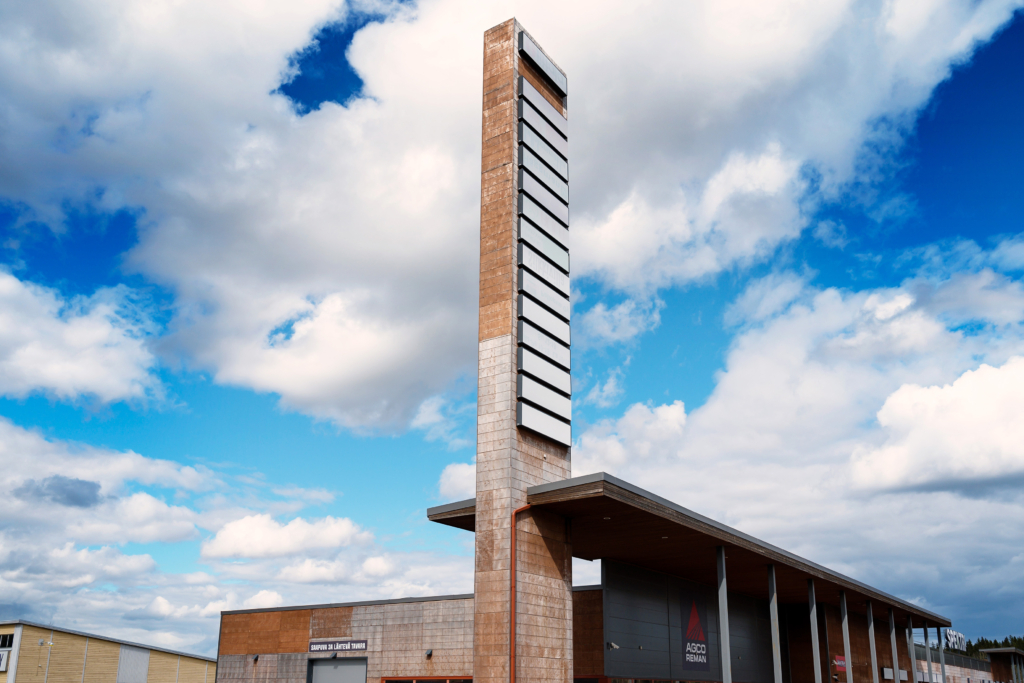
It is obvious that for the people of Äänekoski, Valtra is much more than just a company manufacturing tractors and farm equipment. Luoma-Aho knows the floors and ceilings of the Suolahti factory well, as his father worked in machining at the transmission plant.
“Valtra is one of the biggest employers in the area and most of my friends’ parents worked there. Kids got their first Valtra or Hankkija caps already as toddlers,” Luoma-Aho reminisces.
Many employees come from a family of several generations of Valtra employees. But for Luoma-Aho, choosing Valtra as his place of work was not obvious. In his youth he studied Russian trade at a business school and did an internship in St. Petersburg and Petrozavodsk. But in the year 1997, as he had not found any suitable employment, Luoma-Aho got a summer job at the very same Valtra transmission plant that his father had worked at. His first year was spent doing inventory and transporting tractor parts. Soon Luoma-Aho started progressing in his career. First, he became Procurement Specialist for spare parts, then Purchasing Manager and finally Product Manager.
When the American tractor and farm equipment manufacturer AGCO bought Valtra in 2004, Luoma-Aho was sent to the United Kingdom as Valtra’s representative. The years abroad were enlightening. Luoma-Aho was left with an unforgettable experience of international co-operation and friends he still keeps in touch with. But while in the UK he was constantly, agonizingly homesick.
“I am from a small town and longed to be in more quiet surroundings. I missed fishing and hunting. My greatest desire was to have my morning coffee at the Laukaa service station.”
From insight to light experimentation
Once back from the UK, Luoma-Aho felt at home. In 2012, together with his superior at the time, he started looking for ways to increase the company turnover by a million euros. At first there was just light brainstorming on coffee breaks. Then they came up with a truly innovative idea.
AGCO Power, a Valtra sister company, had remanufactured used tractor engines at their plant, but nobody had thought of doing the same with tractor gearboxes. Excited, Luoma-Aho sent e-mails to representatives of Valtra aftersales asking whether there might be demand for recycled and repaired gearboxes. The responses he got were varied. Some thought the idea was great, others felt it was complete useless.
But the men did not give up and Luoma-Aho started mapping out potential demand from his contacts. They started ordering used and leftover tractor gearboxes from all over the world to Suolahti. Luoma-Aho gathered a group of experts to analyse what kind of damage the old gearboxes had and if fixing them was even possible.
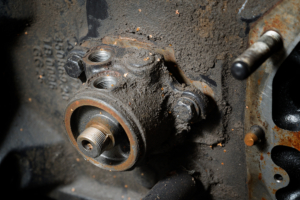
Management at Valtra were very positive about this new business experiment, even though some sales people expressed concerns. They feared that repairing damaged gearboxes and selling them could damage the brand of a company known for its high-quality products.
“The concerns were unfounded as everybody who comes into contact with farm equipment knows the stresses they endure. Our customers’ livelihoods depend on these machines so it is critical that servicing them is as quick and easy as possible.”
Luoma-Aho and Sami Liimatainen, an expert in gearboxes, were given about a hundred square metres of space at the Suolahti factory. They developed the gearbox remanufacturing process that is still used today. The idea is not to refurbish the customers’ original gearbox, but to instead send them a previously used and refurbished one. This way the equipment is back in the field in no time.
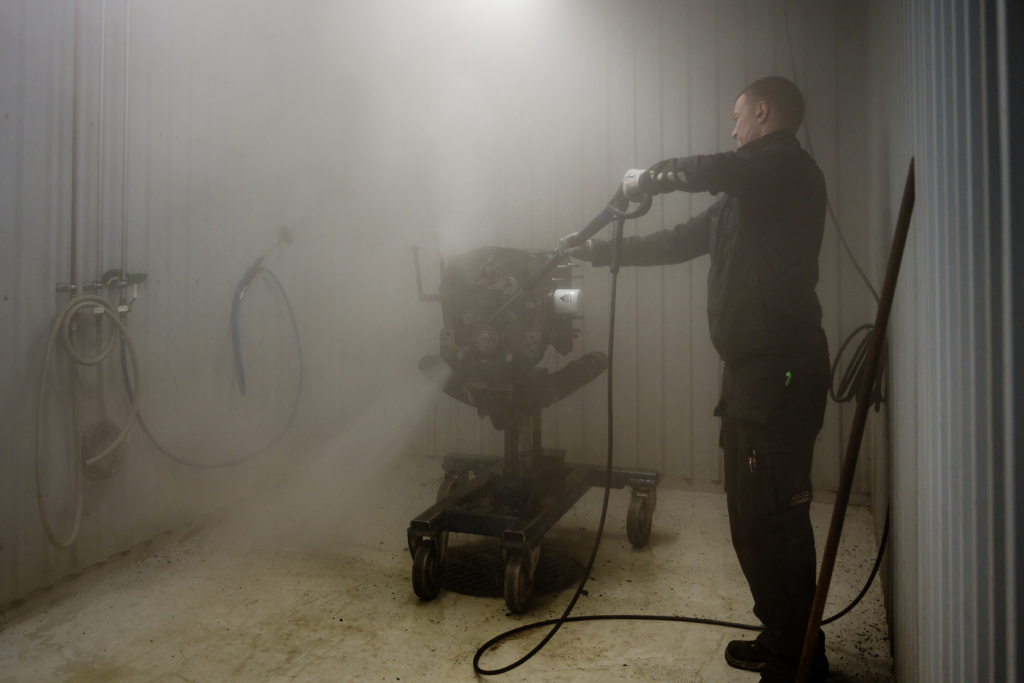
When ordering a Reman gearbox, the customer pays a deposit which is approximately 50 per cent of the gearbox price. This deposit is repaid to the customer upon return of the old gearbox. When the broken gearbox arrives at the factory with its case, it is first taken to be washed. Having worked the fields, the machines are often full of soil, dirt and animal manure, so a thorough scrubbing is needed. After that the gearbox is checked. Any defective parts are replaced with new ones and all bearings are replaced. After re-assembly the gearbox is painted, updated and tested. All remanufactured gearboxes have a one-year warranty and their price is 30-40 per cent cheaper than a new product. Compared to manufacturing a new gearbox, the energy savings are nearly 85 per cent.
Remanufacturing gearboxes benefits product development
Remanufacturing is manual work and no part of the process is automated. Each gearbox is always repaired and renewed by the same technician from start to finish. Trips down memory lane are also frequent as a technician may come across a gearbox that he had assembled more than 20 years ago.
“We have thought about attaching a picture of the technician to the gearbox test report,” Luoma-Aho laughs. He thinks it would be impossible to repair and maintain the Reman gearboxes with such attention to detail anywhere else.
“All Valtra tractor gears have been designed and manufactured at the Suolahti factory and we have the best technical support. Our technicians have worked with these gears for decades and their expertise is irreplaceable.”
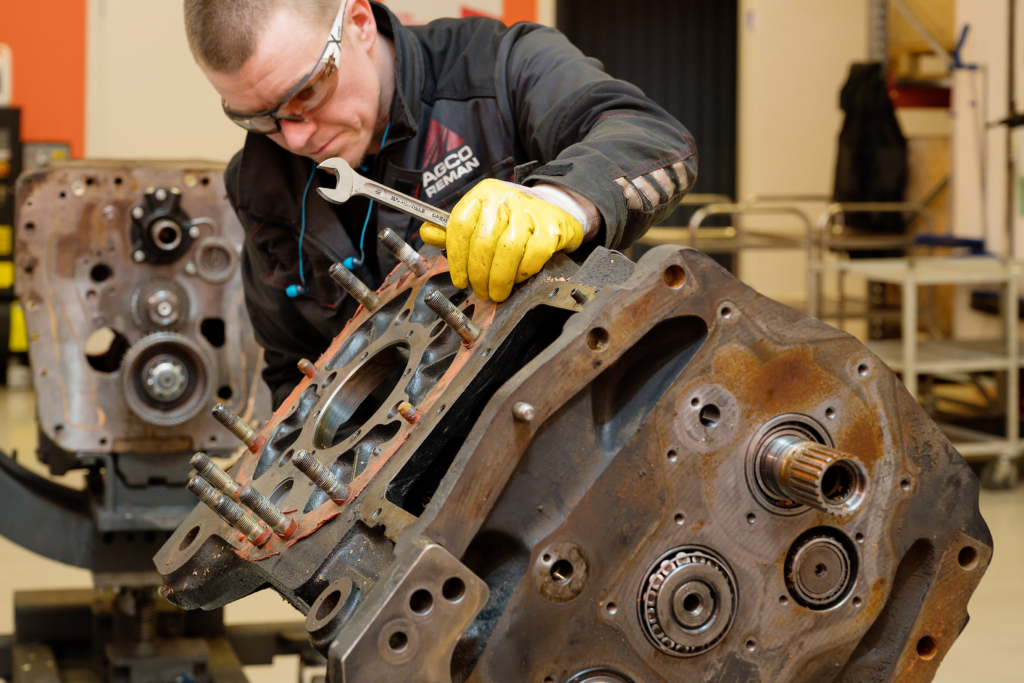
As such, Luoma-Aho thinks the most disappointing situation in his work are remanufactured gearboxes breaking down.
“It is difficult to hear that a gearbox did not last as long as was hoped for. I have made it clear to everybody that we will fix them, no matter the cost.”
Gearbox remanufacturing has also helped Valtra product development where the engineers now regularly get up-to-date information on issues with different gearbox models. This way, they can develop more durable products.
Even though the operating model making use of circular economy has gotten a lot of positive attention, Luoma-Aho says he had not even heard about the term “circular economy” when developing the business.
“As a matter of fact, we have only now realised ourselves that what we do is circular economy. Originally, we did not develop the service for the energy savings but rather purely for business advantage.”
The new service has also increased customer commitment to and satisfaction with Valtra. Just changing the gearbox can give an old tractor a new lease on life for decades. Reman gearboxes are a part of solving agriculture’s profitability issues. The Finnish tractor market has shrunk in recent years and farmers are very receptive to any new ideas for balancing their budgets. A third of the Reman sales are to Finland.
The best marketing tool has been Valtra dealers to whom the service has been promoted very actively since the very beginning. In Finland, dealer awareness is getting to a good level and currently France, Germany and the UK are the main focus.
Within Valtra, the new and successful business has gotten a lot of attention and every new open position has had plenty of good candidates. Currently six technicians work in gearbox remanufacturing and one more is starting soon. Luoma-Aho says he is proud to have made his mark in the Valtra brand.
“We have a very positive atmosphere here and we did not want to hide that. Working here, you can also do your own part in tackling climate change.”
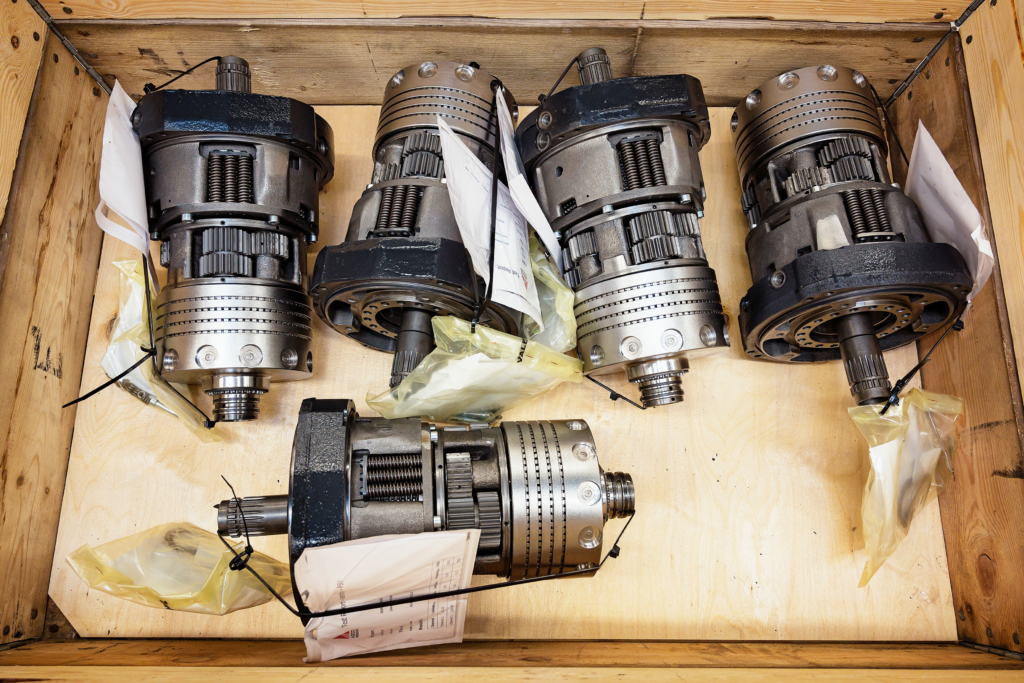
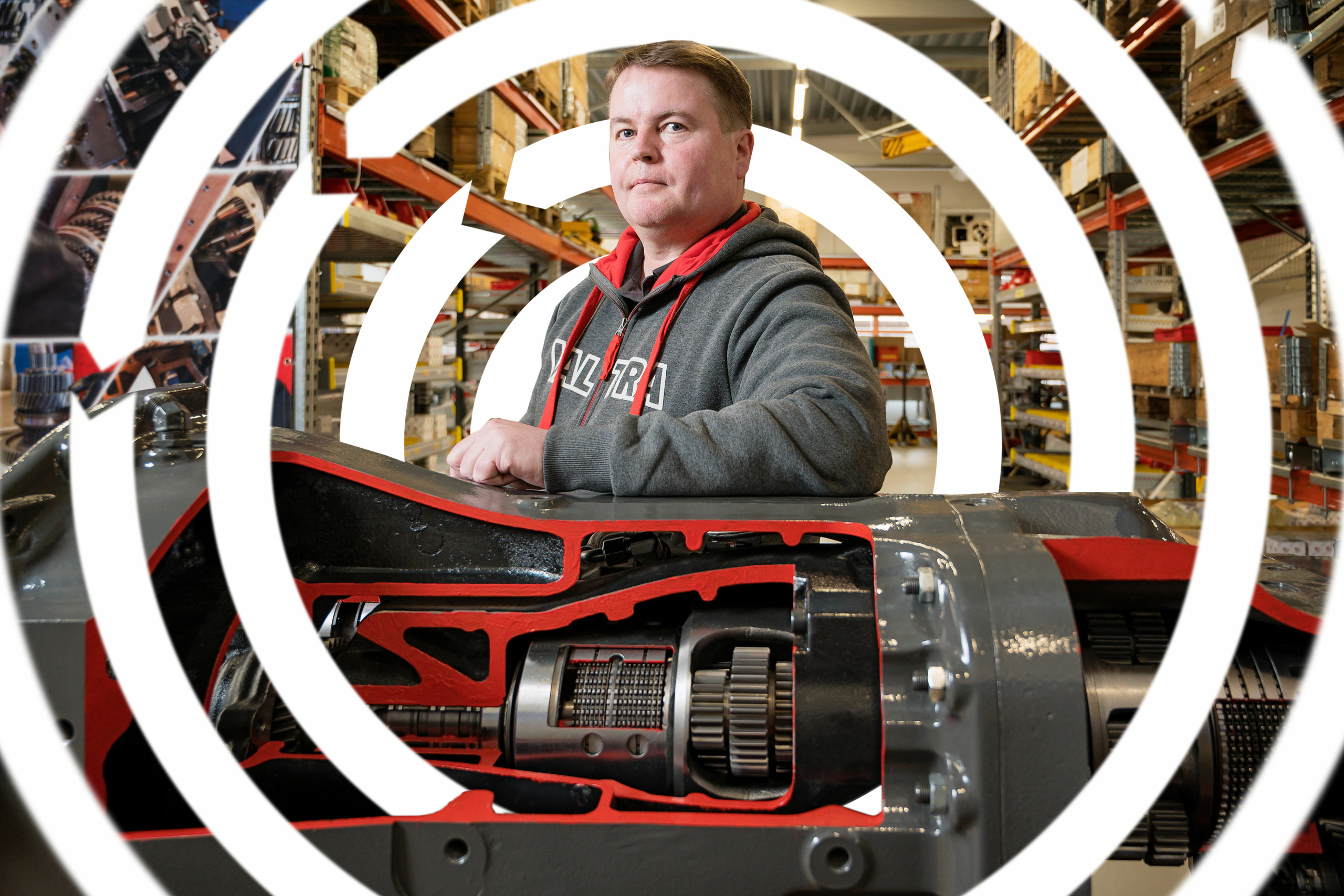
















Recommended
Have some more.